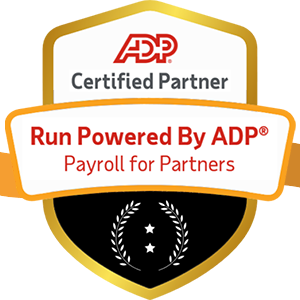
In today's fast-paced and ever-changing work environment, employee engagement has become a top priority for organizations of all sizes and industries. Engaged employees are more productive, more motivated, and more likely to stay with their employer long-term. But how can companies foster a culture of engagement and ensure their employees feel heard, valued, and supported? The answer lies in establishing effective feedback mechanisms.

A feedback mechanism is any system or process that allows employees to share their thoughts, opinions, concerns, and ideas with their employer. This can take many forms, from regular one-on-one meetings with managers to anonymous surveys to all-hands town hall meetings. The key is creating multiple channels for feedback that are easy to use, responsive, and action-oriented.
Why are feedback mechanisms so important for employee engagement? Let's dive in and explore the many benefits.
When employees feel like their voices are being heard and their feedback is being taken seriously, it builds trust and goodwill between them and their employer. They feel more invested in the success of the organization and more committed to their work. In contrast, when feedback falls on deaf ears or gets lost in bureaucratic red tape, it can breed resentment, cynicism, and disengagement.
Establishing clear and transparent feedback mechanisms sends a powerful message to employees that their input matters and that the company is committed to continuous improvement. It creates a culture of openness and honesty where employees feel safe sharing their perspectives, even if they're critical or challenging.

Your employees are on the front lines of your business every day, interacting with customers, using your products and services, and navigating the challenges of their roles. They have valuable insights and ideas that can help drive innovation, solve problems, and improve processes. But without effective feedback mechanisms in place, those insights often go untapped.
By actively seeking out employee feedback and creating space for ideation and problem-solving, companies can tap into a wellspring of creativity and ingenuity. Employees who feel empowered to share their ideas are more likely to think outside the box, challenge the status quo, and come up with novel solutions to complex challenges.
Feedback mechanisms aren't just about employees communicating with their managers or leadership team. They're also about employees communicating with each other and collaborating across teams and departments. When feedback is flowing freely and transparently, silos start to break down and cross-functional collaboration becomes the norm.
For example, imagine a company that uses a social intranet platform where employees can post ideas, ask questions, and provide feedback on projects and initiatives. This creates a virtual watercooler where employees from different parts of the organization can connect, share knowledge, and work together towards common goals. It also helps surface issues and concerns that might otherwise go unnoticed, allowing managers to address them proactively.
Feedback is essential for personal and professional growth. Without regular, constructive feedback, employees can struggle to identify their strengths and weaknesses, set goals, and make progress in their careers. But with effective feedback mechanisms in place, employees can get the guidance and support they need to thrive.
One powerful feedback mechanism is the performance review process. When done well, performance reviews provide employees with clear, specific, and actionable feedback on their work, along with opportunities for development and advancement. They also give employees a chance to reflect on their own performance, set goals for the future, and have meaningful conversations with their managers about their career aspirations.
Another important feedback mechanism is peer feedback. By creating opportunities for employees to give and receive feedback from their colleagues, companies can foster a culture of continuous learning and improvement. Peer feedback can be especially valuable for employees who work closely together on projects or teams, as it provides a different perspective than manager feedback alone.
No workplace is perfect, and even the most engaged employees can experience frustration, burnout, or conflict from time to time. Without effective feedback mechanisms in place, these issues can fester and grow, leading to reduced productivity, increased turnover, and even legal or reputational risks for the company.
But when employees have clear and accessible channels for providing feedback, they're more likely to speak up when something isn't working or when they're experiencing a problem. This allows managers and HR teams to identify and address issues early on, before they become more serious or widespread.
For example, imagine an employee who is struggling with a difficult manager or experiencing harassment from a colleague. Without a safe and confidential way to report these issues, the employee might suffer in silence or even leave the company altogether. But with an anonymous hotline or reporting system in place, the employee can raise their concerns without fear of retaliation, and the company can take swift and appropriate action to address the situation.

So how can companies create feedback mechanisms that truly engage employees and drive results? Here are some best practices to keep in mind:
Employee engagement isn't a one-time event or a checkbox to be ticked. It's an ongoing process that requires consistent effort, communication, and trust-building. And one of the most powerful tools in the engagement toolkit is the feedback mechanism.
By creating effective channels for employee feedback, companies can tap into a wealth of insights, ideas, and innovations. They can build trust and transparency, drive problem-solving and collaboration, support employee growth and development, and identify and address issues before they escalate.
But creating effective feedback mechanisms isn't just about installing a suggestion box or sending out an annual survey. It's about creating a culture of openness, honesty, and continuous improvement. It's about valuing employee voices and perspectives, and using them to drive meaningful change in the organization.
So if you're looking to boost employee engagement in your company, start by examining your feedback mechanisms. Are they easy to use, responsive, and action-oriented? Do they create space for employees to share their thoughts and ideas openly and honestly? Do they lead to real change and improvement in the organization?
If not, it's time to rethink your approach. Because when employees feel heard, valued, and supported, they're more likely to bring their best selves to work every day. And that's a win for everyone – employees, customers, and the company as a whole.


